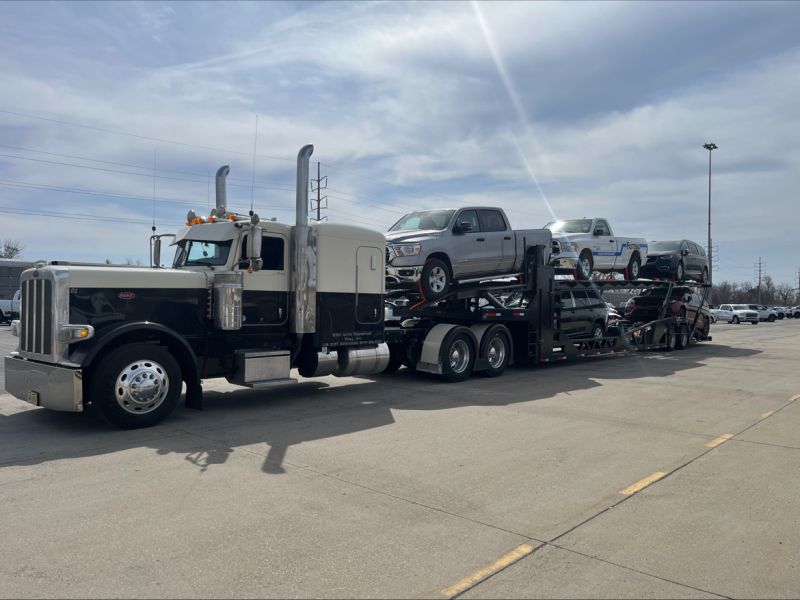It is quite common for owners wondering if their vehicles are covered by insurance when cars are shipped overseas. The need to be assured that the car is protected against damages Are international deliveries insured automatically, theft, or any unexpected hassles while in transit is quite reasonable. Now the question is whether international deliveries are given automatic insurance or not.
Not really a yes or no kind of decision, there are various points to be considered. This tutorial will take you through the steps of how international shipping insurance is handled, coverage that is generally included, and how you make certain that your vehicle on the way is properly insured.
Step 1: Understanding International Shipping Insurance
International car shipping is such a difficult task that several people are involved, for example, the shipping company, the carrier, customs authorities, and ports. Because of international transport, standard shipping insurance might be different for each carrier, the kind of transport, and the specific terms of the service.
1. Basic Coverage Provided by the Carrier
A good part of the shipping companies get along with the inclusion of a basic insurance policy as part of the international shipping service. This coverage, however, in most cases, is very limited, and it may be that your vehicle is not protected from all types of damage.
What is usually covered: The basis of the coverage in most cases refers to the local transport, where the damage can be only the minor scratches or dents. In the event your car is moved only on an open deck, which is the most common method, the insurance coverage can give you some help against the weather during the trip as well, like the hail or the rain.
What is usually not covered: Mechanical failure, theft, and severe accidents are some of the incidents that basic insurance might not be enough to cover. Whats more, if the vehicle is unregistered or in non-operational condition, then at the very least, it is not covered.
2. Enclosed Transport Coverage
Usually, when the car is shipped by an enclosed transport, the insurance coverage is of a higher level. Enclosed transport is a less risky and more reliable way of delivery, when your car is put inside a completely enclosed trailer, thus being safeguarded from both the weather and the possible small stones on the road.
Enlarged coverage: In case of an enclosed shipment, the carriers are usually willing to take out a full insurance policy covering not only the driver getting involved in a car accident, but also the theft of the car, or damage happening due to unplanned situations.
 Step 2: Does International Shipping Always Mean Full Insurance?
Step 2: Does International Shipping Always Mean Full Insurance?
Generally, basic insurance is part of the package, though it is very essential to know that the full coverage may not always be a part of the standard shipping package. What you should know is:
1. Insurance Carriers Will Provide Different Options
Shipping firms are usually providing several insurance plans, and the basic one that is given may only cover a small portion of the total value of your car. In most cases, you’ll be allowed to increase your insurance coverage to a more detailed one, which will cover a wider range of damages or losses.
Adjusting the Amount of Your Insurance: Sometimes a shipping company will allow you to buy extra insurance coverage. It is a necessity if you own and are shipping either a luxury car, a vintage vehicle, or an exotic car.
Third-Party Insurance: Some clients decide to trust third-party insurance only and to take a policy of an insurance company that is professional in this field. In that case, the coverage will be more complete if the value of the car is higher than the default coverage of the shipping company.
2. Comprehend What Is Not Covered by the Insurance
A more coverage is bought, it is still necessary to understand what the policy does not cover. For example:
Cars that cannot be operated: If a vehicle is non-operational, car shipping providers may refuse to insure, or they may limit the coverage for inoperable cars.
Trinkets in the car: The major car shipping services are not responsible for the personal things inside a vehicle during the shipping process. Make sure that there are no personal things in your car when you ship it abroad.
Step 3: What Additional Factors Can Impact Insurance ?
There are several other factors that could influence insurance coverage as well as the total cost of your vehicle if you want to ship it overseas. Among these factors are the condition of the vehicle, the way the vehicle is shipped, the country of destination, and even the timing of the shipment.
1. Vehicle Condition
Operational vs. Non-Operational Cars: Generally, if a car is operational, the insurance coverage will be more inclusive. In contrast, a vehicle that is inoperable such as one that cannot be driven or started, the shipping company may provide a limited insurance policy or even no policy at all. In addition, non-operational cars are usually heavy-duty equipment is required for loading and unloading, which can impact both the cost and the coverage.
2. Shipping Method
Open Transport vs. Enclosed Transport: As stated, a car transport in an enclosed trailer offers a higher insurance coverage than an open one. It goes without saying that the vehicle is the less exposed to all sorts of tiny stones, rain, or any other mishaps. Thus, for high-priced or vintage cars, the use of an enclosed carrier is the most common option just to make sure they are completely covered.
3. Destination Country Regulations
There are countries that have very strict rules regarding the import of vehicles and the requirements for getting the insurance. For instance, a vehicle that is coming from the United States and is going to be shipped to some countries in the European Union or Australia, must be local law compliant (safety and emission standard) first before it is allowed to be shipped. Such regulations may also have been implemented for setting the insurance level.
4. Timing and Seasonality
If your car is shipped at the height of the season, for example, during the summer months, the cost of the transportation as well as the insurance will be raised. The main reason for this is that more people want to ship their cars and consequently the transport companies have less available space to meet the demand. Besides that, the risk of waiting and that of getting into accidents is higher.
Step 4: How to Make Sure That Your Car Is Covered Properly for Overseas Shipping
If you want to make sure that your car is insured in the shipping process, here are some practical measures you can take:
1. Talk to the Transport Company
Before doing anything with your shipment, having a chat with the shipping company to find out how much their insurance service will cost is the first thing you should do. Asking such questions as the ones below will not make you lose face:
What is the core coverage under the basic insurance?
What are the available coverage options apart from the basic one?
Are there any limitations that you should take into consideration?
2. Acquire a tailored insurance policy if needed
In case the regular insurance is not enough to cover your car, it is advisable to get an extra insurance either with the help of the shipping company or a third party. This is extremely significant when you have a valuable car to be shipped.
3. Thoroughly Peruse the Contract
Help yourself by carefully checking the terms and conditions of the shipping insurance to make sure you understand the coverage and non-inclusion aspects. This will prevent you from being shocked by the occurrence of an unfortunate event.
4. Document the Vehicle’s Condition
Before your vehicle is picked up for shipping, take detailed photos of the car’s condition. Document any scratches, dents, or other issues so you can report them if any damage occurs during transport.
Step 5: In what ways ShippingCars.org be of assistance
We at ShippingCars.org ensure that your car is well taken care of during the entire process. This is the way we can help you:
Just the right insurance options: We give you comprehensive insurance options, making it possible for you to pick a coverage level that is most suitable for your needs.
Safe and sound shipping partners: Our reliable shipping partners are your guarantee for a security and safety transport for your vehicles, thus, your car will be the least of your worries.
Professional Support: We will take you through the whole process from getting a quotation, and comprehending your insurance coverage until you have a hassle-free experience.
Summing it all up, the coverage for the transportation of your car is usually part of the shipping cost and thus is basically insured by default. However, the latter may only be partial, hence you should consider increasing your insurance in case you ship a luxury car.
We at ShippingCars.org, provide the necessary expertise and the trustworthy shipping services to give you the total protection you're looking for during the vehicle's transportation. Get in touch with us to receive a quote and be absolutely sure of the accurate coverage of your car in its international shipping.




 What Are Import Duties, Exactly?
What Are Import Duties, Exactly?


 Costly Cages
Costly Cages